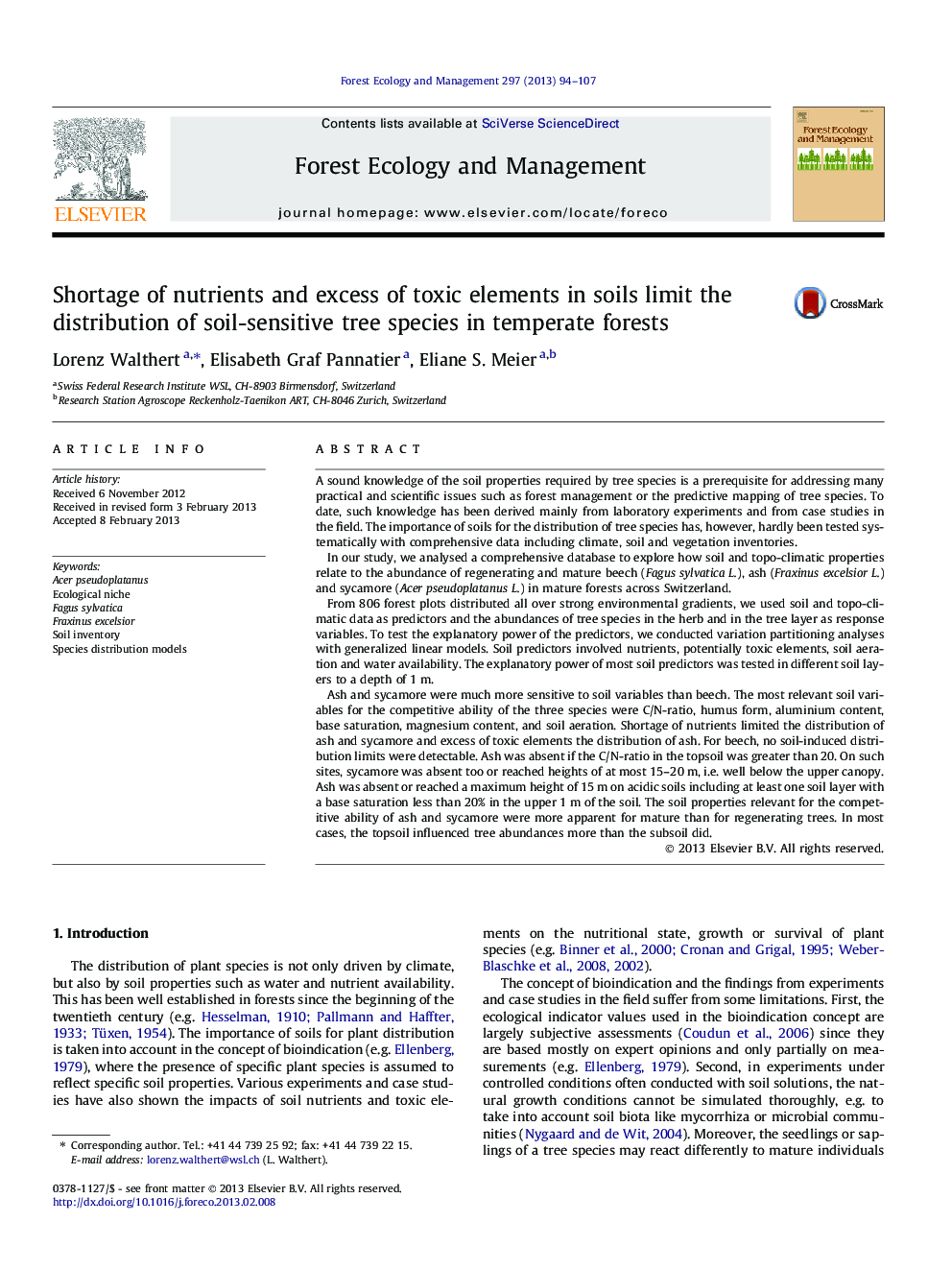| کد مقاله | کد نشریه | سال انتشار | مقاله انگلیسی | نسخه تمام متن |
|---|---|---|---|---|
| 87103 | 159231 | 2013 | 14 صفحه PDF | دانلود رایگان |

A sound knowledge of the soil properties required by tree species is a prerequisite for addressing many practical and scientific issues such as forest management or the predictive mapping of tree species. To date, such knowledge has been derived mainly from laboratory experiments and from case studies in the field. The importance of soils for the distribution of tree species has, however, hardly been tested systematically with comprehensive data including climate, soil and vegetation inventories.In our study, we analysed a comprehensive database to explore how soil and topo-climatic properties relate to the abundance of regenerating and mature beech (Fagus sylvatica L.), ash (Fraxinus excelsior L.) and sycamore (Acer pseudoplatanus L.) in mature forests across Switzerland.From 806 forest plots distributed all over strong environmental gradients, we used soil and topo-climatic data as predictors and the abundances of tree species in the herb and in the tree layer as response variables. To test the explanatory power of the predictors, we conducted variation partitioning analyses with generalized linear models. Soil predictors involved nutrients, potentially toxic elements, soil aeration and water availability. The explanatory power of most soil predictors was tested in different soil layers to a depth of 1 m.Ash and sycamore were much more sensitive to soil variables than beech. The most relevant soil variables for the competitive ability of the three species were C/N-ratio, humus form, aluminium content, base saturation, magnesium content, and soil aeration. Shortage of nutrients limited the distribution of ash and sycamore and excess of toxic elements the distribution of ash. For beech, no soil-induced distribution limits were detectable. Ash was absent if the C/N-ratio in the topsoil was greater than 20. On such sites, sycamore was absent too or reached heights of at most 15–20 m, i.e. well below the upper canopy. Ash was absent or reached a maximum height of 15 m on acidic soils including at least one soil layer with a base saturation less than 20% in the upper 1 m of the soil. The soil properties relevant for the competitive ability of ash and sycamore were more apparent for mature than for regenerating trees. In most cases, the topsoil influenced tree abundances more than the subsoil did.
Figure optionsDownload as PowerPoint slideHighlights
► Soils were important in influencing tree species composition.
► Ash and sycamore were much more soil-sensitive than beech.
► The distribution of ash and sycamore was limited by soil acidity and nitrogen supply.
► The distribution-limiting soil properties were more apparent with increasing tree age.
► The topsoil influenced tree species abundances more than the subsoil did.
Journal: Forest Ecology and Management - Volume 297, 1 June 2013, Pages 94–107